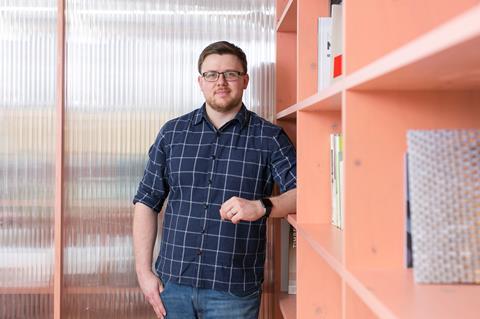The built environment professions need to adopt a less risk averse approach to prototyping and testing their designs, writes Liam Bryant

Sometimes it can feel like the construction industry is being buffeted by a hurricane, with inflation and material shortages – let alone the climate crisis – creating a seemingly unsolvable wave of obstacles for architects and engineers. Vague hopes that the industry could adjust by slightly improving existing methods and processes to deliver ‘lower’ carbon buildings are simply not working; we cannot continue with construction as usual.
It may feel like an insurmountable challenge to deliver good design in this environment, when existing methods aren’t acceptable and more radical alternatives can’t be widely adopted (yet). However, that’s not an excuse for us to do nothing in the meantime.
Current practice – tied to typical details, historical methods and codified mediocrity – is no longer good enough. We must do more with less. The construction industry must innovate, research and develop on a scale it has never been able to before, requiring huge changes in our working methods. So, how can we, as professionals, help to support this transition?
Firstly, we must become more comfortable with failure. Unlike the ‘move fast and break things’ culture of tech, construction has, quite reasonably, always been risk averse. While this makes sense for the final build, where safety is critical, it’s not a good approach for design. We need to allow for experimentation and exploration, accepting that sometimes we’ll head up a blind alley. If we already knew what the answer was, we’d be doing it already!
This will require us to rethink the design process – we can hardly get to mid-stage 4 before realising that the whole proposal is wrong. There must be sufficient space at the start of the project to challenge assumptions and produce the radical change we need. We must form the building around a sustainable design, rather than trying to bolt on fixes to a poorly constructed skeleton.
The unusual nature of the construction industry exacerbates this problem by creating a vast quantity of unique designs, unlike the tech and manufacturing worlds which prototype, iterate and produce millions of repeated units. This allows ideas to be trialled and improved over time, until the Nokia 3310 is replaced by an iPhone.
We couldn’t and shouldn’t create whole building prototypes, but this shouldn’t stop us testing and experimenting on a smaller scale. Valuable lessons can be learnt, with cheap and small-scale mock-ups delivering lessons for multi-million-pound packages, similar to the approaches used in façade design.
Testing is even more critical for the ever-increasing volume of refurbishment projects. We currently struggle to justify existing buildings that have performed adequately for decades, and make huge efforts to ‘fix’ problems that don’t exist. Understanding the opportunities and performance testing existing buildings will allow us to extend their life and usage with minimal cost and carbon.
Testing can easily be made part of the design process, but requires designers to work closely with contractors, manufacturers and academia to deliver innovative new approaches with low risk to delivery. At Webb Yates this spans across all fields, from acoustic-assembly testing, load testing existing structures and large scale fire testing for glulam truss connections. Individually each of these packages may only result in small improvements, but shared across our projects, company and, eventually, the industry, the aim is that these will combine to make a material impact on the climate crisis.
Talk of R&D might lead some to think of PhDs and years of formal academia, but in reality, it can be delivered in small bursts and still offer huge benefits. Every project will provide some opportunity to improve current practice – the challenge is identifying those pain-points of high cost, complexity or carbon that represent the prospect of doing better next time. These can often be tackled with small and quick tests, to show that an alternative detail can be assembled more efficiently, or that a reduced build-up provides sufficient acoustic separation or similar. Don’t forget there are also R&D tax credits that can defray some of the cost!
It’s also critical that we stop working in silos and instead share ideas and data across disciplines and companies. The scale of the task at hand requires everyone to be moving in the right direction, together. The efforts of individual companies will not be enough on their own, although there will be huge first mover advantages.
There are always excuses for why innovation isn’t possible, whether it’s funding, time or simply the claim that, despite all the evidence, there’s nothing we can improve, but we must resist these simple answers and look for opportunities in our own work. Testing can help us make quantum leaps for environmentally safe design. Challenge yourself to propose one element of testing on your next job: you might just learn something, and maybe help save the planet in the process.
Postscript
Liam Bryant is an Associate Structural Engineer at Webb Yates
















1 Readers' comment